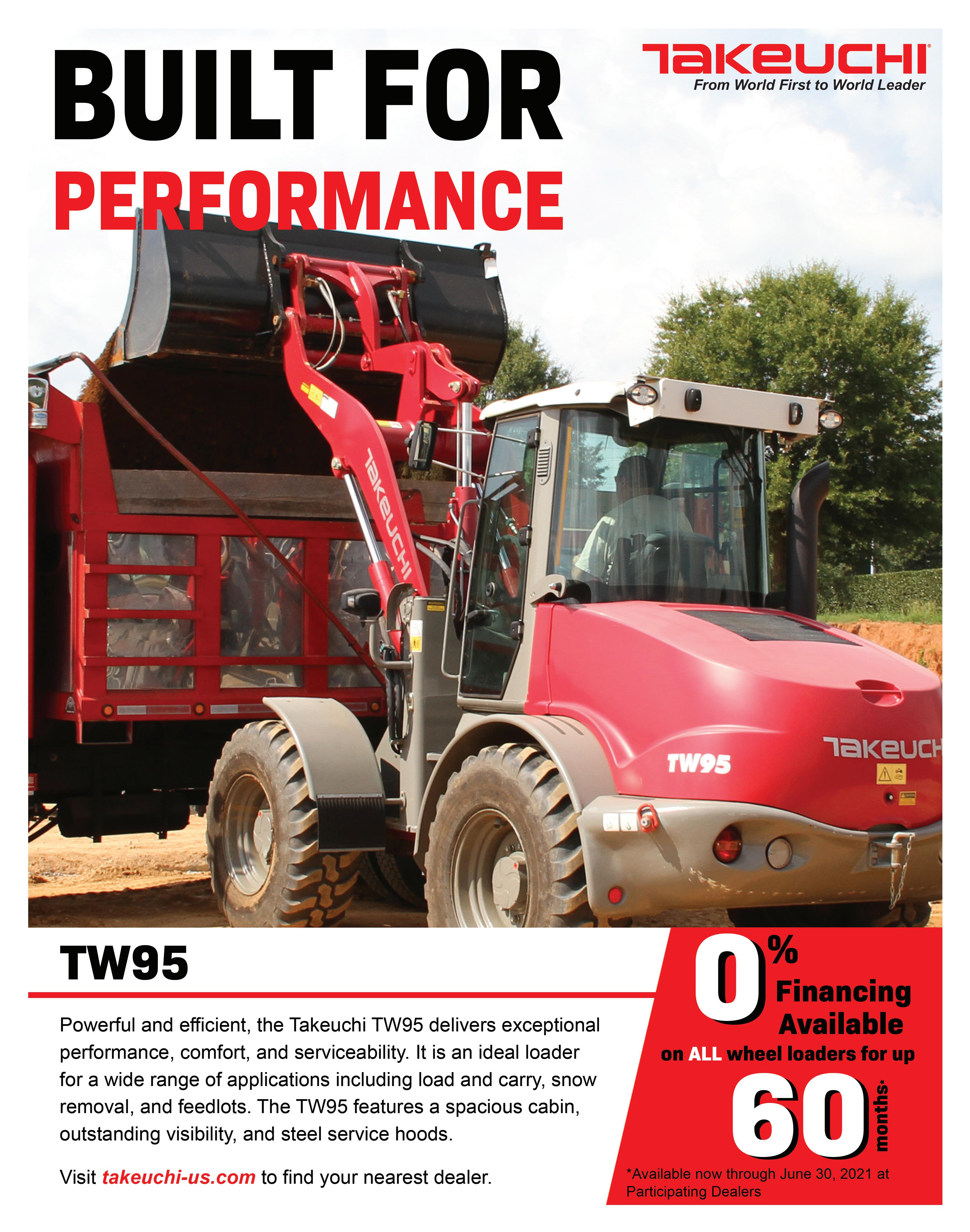
16 minute read
Jobsite Solutions
QUICK-TURN DEMOLITION Calls for Proper Planning and Equipment
The right equipment enabled a fast food restaurant to be demolished and cleared in just five days.
Lee County’s population grew more than 24% between 2010 and 2019, driven by people moving to the southwest Florida area for the sunny skies and warm temperatures. There’s no sign of any slowdown, as the pandemic made it easier for people to work remotely.
Along with population growth comes the demand for the demolition of existing structures to make way for new construction. In January 2021, Backbay Construction earned a project to demolish a fast food restaurant to make way for a new retail bank
EDITOR’S NOTE: This month’s cover features Backbay Construction utilizing its Doosan DX225LC-5 crawler excavator on the project described.
A Doosan DX225LC-5 crawler excavator and a DL220-5 wheel loader were used to quickly complete demolition of the fast-food restaurant. Several trees along the edge of the property needed to be removed. The excavator was paired with a bucket and thumb to help with the task.
branch in Fort Myers. While the total project was scheduled to last six months, the company had to work quickly to get its portions done before other contractors could do their parts.
DEMOLITION AND REMOVAL
When he started Backbay Construction, Mike Thesier was following in his father’s footsteps. Bob Thesier moved from Michigan to Florida in 1987 and operated a successful construction business for 20 years. After graduating from the University of Florida, Mike worked for his father’s company in the estimating department and eventually managed other estimators.
In 2009, two years after his father sold his business, Backbay Construction was formed with only one other employee and with the state still recovering from the Great Recession. Today, the company has grown to approximately 35 employees working on four to seven projects daily. The firm normally works in a four-county area in southwest Florida. Between trucks, trailers and equipment, it owns about 50 pieces of equipment.
To demolish the fast food restaurant, Backbay Construction chose to pair a Doosan DX225LC-5 crawler excavator and a DL220-5 wheel loader, with a compact track loader assisting with some of the demolition tasks, particularly in tight spaces on the jobsite. All three machines were purchased from Synergy Equipment.
The wheel loader worked with the excavator to load the roll-off containers containing the demolition debris. “It took about five working days to tear down the Burger King, to demolish it and load it into dumpsters and haul it off site,” says Thesier.
Several trees along the edge of the property also needed to be removed. Backbay Construction paired the excavator with a bucket and thumb to help with the task. “We use it for a lot more than excavation,” Thesier comments. “The thumb is integral to keep things safe when we’re taking down trees or doing demolition to be able to grasp whatever we’re working with.
“The cameras on the Doosan equipment are extremely helpful in promoting safety and visibility, and letting the operators be aware of their surroundings,” he adds.
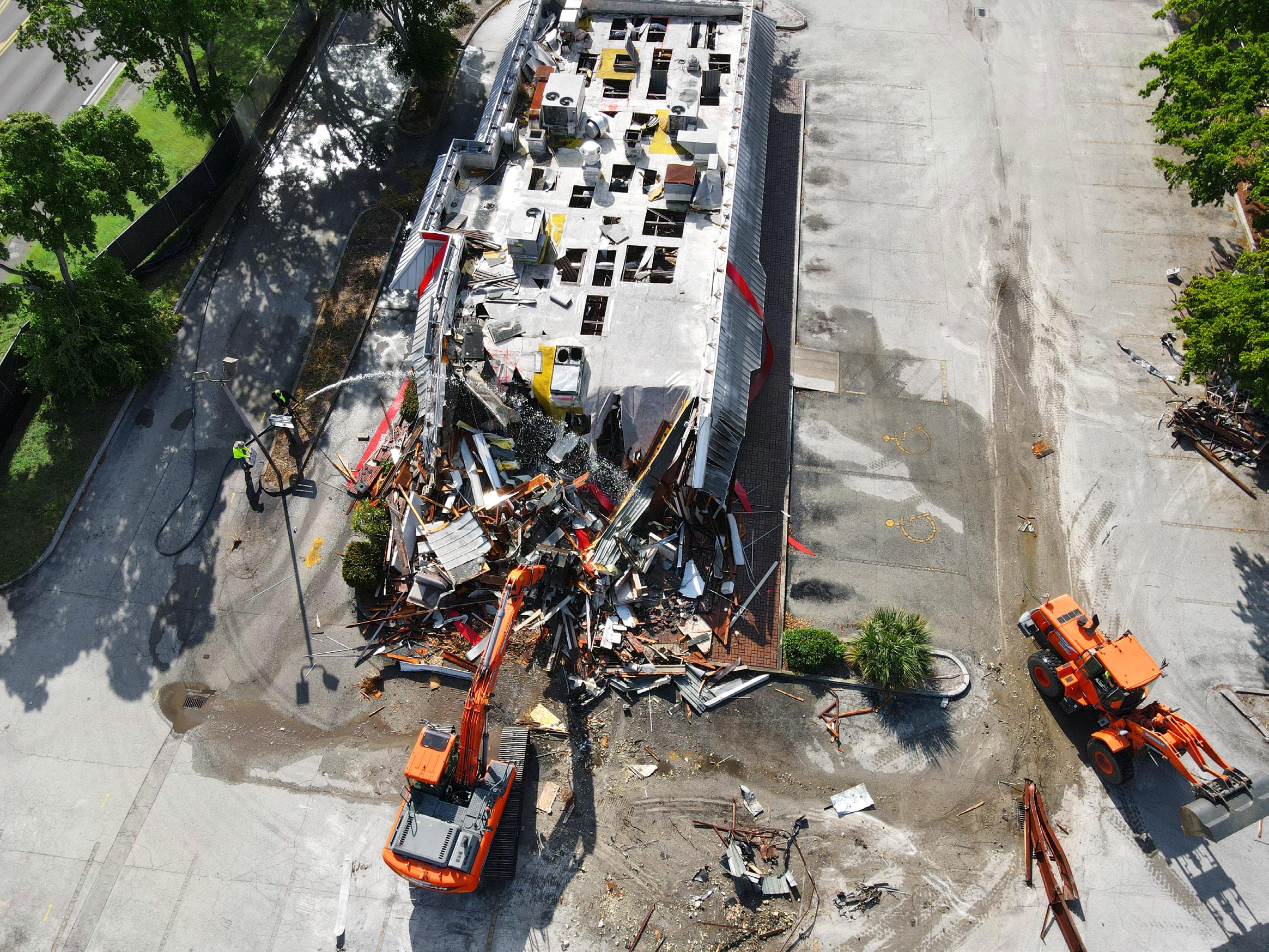
HORIZONTAL WORK
Thesier has differentiated his company from others by performing “horizontal,” or commercial, site work. The company clears land for future development, performs excavating, grading and filling; asphalt paving; striping and signage; concrete curbing; flatwork and underground utility installations. Most of its projects are between one and 30 acres.
For this project, Backbay Construction was responsible for the site earthwork, grading, paving and curbing. Once the demolition and clearing were complete, the company did the site prep. Once that was finished, the company left while a “vertical contractor” built the new structure. Backbay Construction then returned to complete the rest of the project. ET
Read more at www. ForConstructionPros.com/ 21415332.
The Kenco Pipe Lift uses the power of gravity to allow the scissor action of its pipe lifter to clamp securely on pipe.
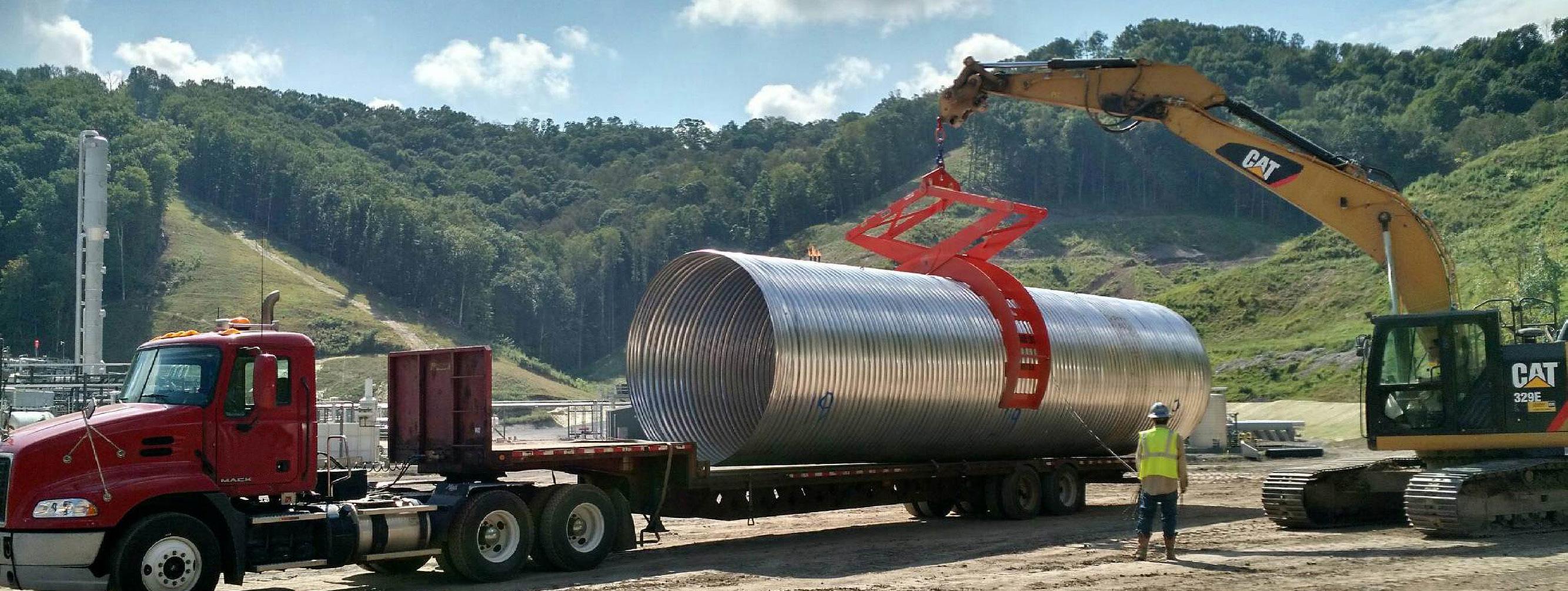
Balance COST vs. EFFICIENCY with Pipelaying Attachments
The correct attachment allows workers to safely complete the project within the timeline.
A Caldwell CPP Pipe Pick or Model CPL Leveling Pipe Lifter can be used on concrete pipe. The CPP is less expensive but requires a person to install and remove it from the pipe, where the CPL can be installed and removed by the excavator operator.
Dedicated pipe handling attachments increase jobsite productivity and safety. But choosing the best attachment for the job requires an understanding of utilization, the type of pipe that needs to be placed, carrier lifting constraints, versatility and much more.
“Everyone knows that the right equipment and tools for the job make any project easier and faster — such as excavators for digging, hammers for demolition, crushers for refining hard soil and materials, etc.,” says Justin Hendricks, general manager/director of engineering, Vacuworx. “Choosing the right attachment for material handling is no different.”
He advises companies to look for attachments that: ˜ work with your existing host machines, ˜ offer the degree of attachment flexibility needed — i.e., do you want to attach to an excavator and then leave the attachment on indefinitely, or do you need to switch out attachments during a job? ˜ and operate in a way that keeps workers out of harm’s way.
Machine versatility is a common concern. “For example, Vacuworx attachments are available with a variety of quickconnect options for virtually any excavator, can be installed and ready to use in under an hour, are available with either diesel engines or can be run off the host machine’s hydraulics,” Hendricks points out. “All heavy-duty RC and MC Series lifters feature 360˚ rotation and wireless remote operation from the cab of the excavator to keep people away from hazard areas.”
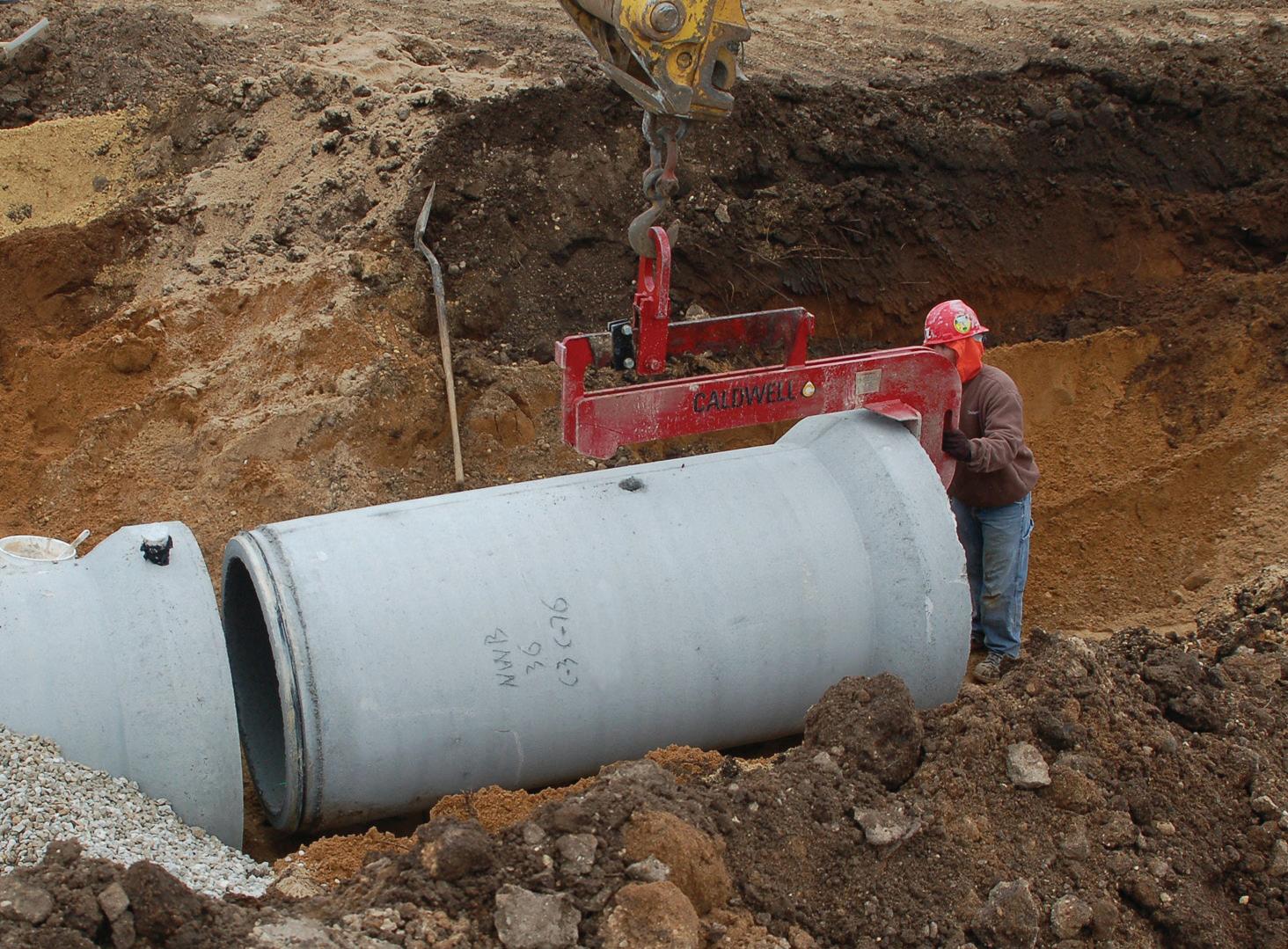
ATTACHMENTS ELIMINATE RIGGING SLING RISKS
In some instances, contractors have used slings for lifting and positioning pipe as opposed to purchasing dedicated attachments.
“Traditional material handling methods, such as slings and chains, expose workers to risks by requiring them to be in the loading area, possibly climb onto the pipe or be in the trench to release the pipe,” says Hendricks. “These methods may also create an unsafe environment due to pipe that is not secure, unsafe rigging or environmental conditions that could affect the load."
There are many potential downsides to using slings. “Using slings can be time consuming when connecting and disconnecting,” notes Dan Mongan, The Caldwell Group. “In addition, pulling the sling out from under the resting pipe can be dangerous and cause sling damage. Dedicated attachments increase efficiency and safety.”
You really want to limit the number of employees working around the pipe being lifted. “Any time you reduce labor or interaction with the lift, it is safer,” says Mongan. “In addition, some of our pipe lifting attachments can be removed from the pipe without having someone in the trench. Others shorten the time they are in the trench.”
The benefits are clear. “It’s really about productivity and safety,” he says. “If you imagine a sling wrapped around a pipe and you lower the pipe into the
trench, somebody has to get in the trench to disconnect and you have to pull the sling out. It’s laying under the pipe; you have to drag it out from under and that can cause damage to the sling. There is tension in the sling and all of a sudden it comes free. You have all that energy in the sling and it could hit somebody. So, there are a lot of advantages to using an attachment.”
Using the correct attachment also simplifies the entire process. “The idea is to do everything as right and safe as possible the first time,” says Tracy Black, operations manager, Kenco. By using a pipe lifting attachment, the bedding material isn’t affected. “Slings wrapped around the pipe must be removed after the pipe is installed. This typically causes the sling to be drug around the pipe and through the bedding. Many times, this will rotate the pipe and occasionally unseat the joint.
“As contractors become more safety oriented, there are many transitioning to purpose-built lifting attachments,” he continues. “Unlike slings, the Kenco Pipe Lift, Pipe Hook and SuperLift allow the operator to be off center of the pipe and still make a safe pick. Slings constantly move against the pipe, which creates wear.”
Any pipe lifting attachment can greatly increase the safety of unloading, staging and laying pipe. “The operator has the ability to position the lifter over or in the pipe to eliminate putting personnel in harm’s way,” says Black. “The same applies after the pipe is placed. The operator has total control of placing and removing the attachment.”
MAKING A CHOICE


There are several things to consider when choosing a pipe handling attachment. “It is important to know the pipe outside diameter, pipe weight and pipe material,” says Mongan. “Other factors include the lift capacity of the excavator and how the lifter will connect to it.”
You also need to understand the range of pipe you will be installing. “All of our pipe lifting attachments are rated for weight and some versions have diameter ratings, as well,” says Black.
“For instance, the Pipe Lift grabs the outside diameter of the pipe, thus it has an Outer Diameter (OD) range per model," he says. "The Pipe Lift was designed with capacities that coincide with standard pipe diameters of its given range. The Kenco PL2000 will accommodate 8-, 10- and 12-in. PVC, ductile iron or steel pipe. This model has an outside grip range of 8.63 to 13.20 in., which factors in the pipe wall thickness. Standard Pipe Lift models are available to handle 4-in. PVC/ductile iron reinforced concrete pipe (RCP). Each model will typically handle two to three pipe sizes, which minimizes the ditch width.”
Some attachments increase versatility by being able to handle multiple pipes. “The Pipe Lift and SuperLift are designed to accommodate any pipe material,” says Black. “These lifters are mechanical so they can only squeeze the pipe proportional to the weight being lifted. They can also be used on longer lengths of pipe. The operator is afforded the opportunity to relax the grip and slide the lifter to the preferred balance point without the need for ground personnel.”
There is an attachment suited for almost any pipe laying application. “We have a lot of different attachments,” says Mongan. “With some, you still need to get into the trench and with others you don’t. It’s just dependent on the specific lifter and the application. [Caldwell's] Pipe Pick or Tea Cup could lift a variety

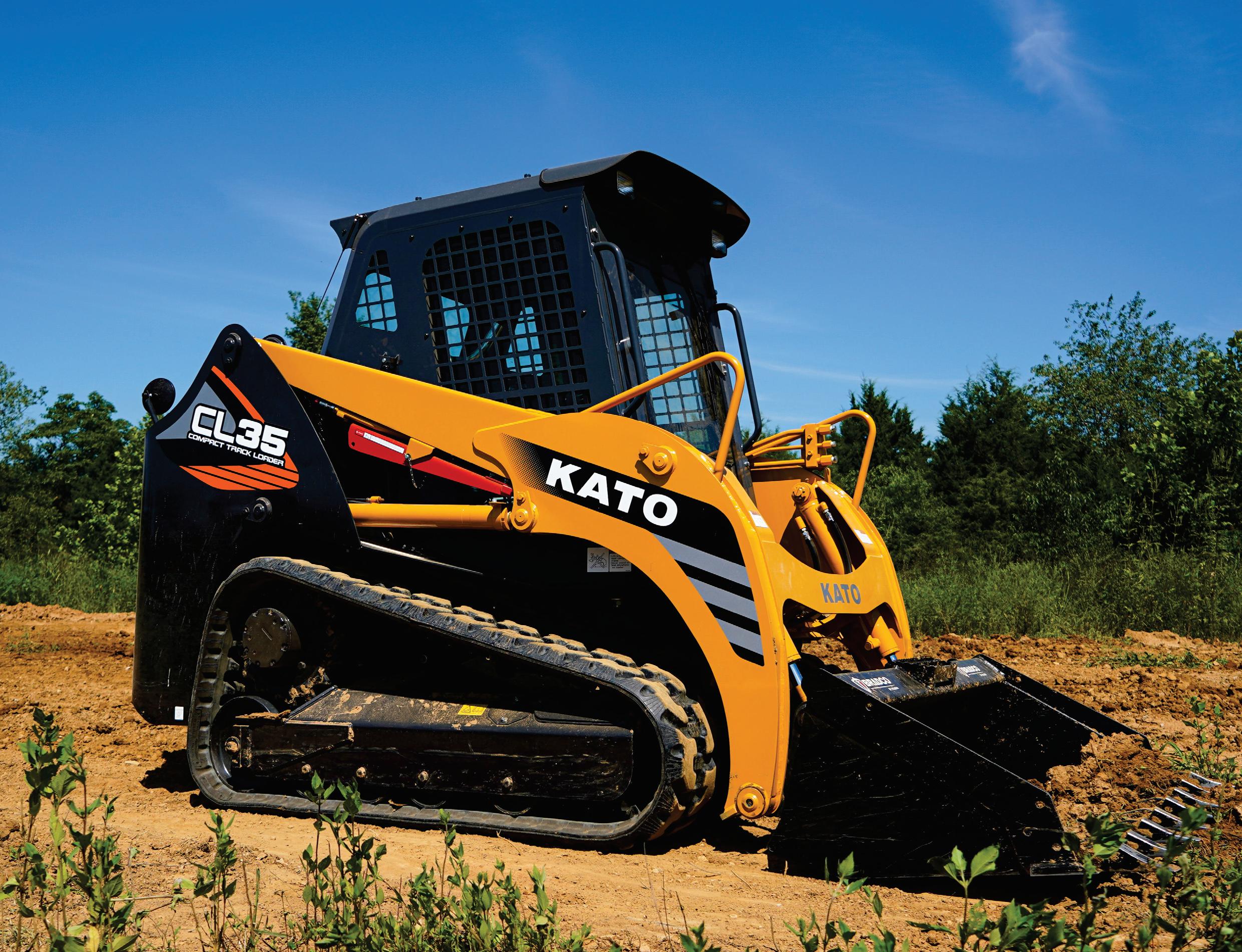
HERE FOR ANY JOB. ANYTIME.
Starting with the highest quality of equipment, KATO’s CL35 is built to handle the toughest projects and the most rugged terrain. KATO’s versatile CL35 Compact Track Loader, meets the needs of any job-site. The CL35 features an operating weight of 7,800 lbs. and is easily trailered to your next jobsite. The CL35 also features a comfortable cabin and responsive pilot controls for a superior operator experience. Additionally, KATO’s US-based distributor, Compact Excavator Sales, is a family-owned business that puts customers first. Knowledgeable product experts are always standing by to assist with any service or maintenance issues that arise and our streamlined parts distribution minimizes downtime, keeping projects on schedule. Call today to find out how KATO’s superior service can help you achieve your goals.

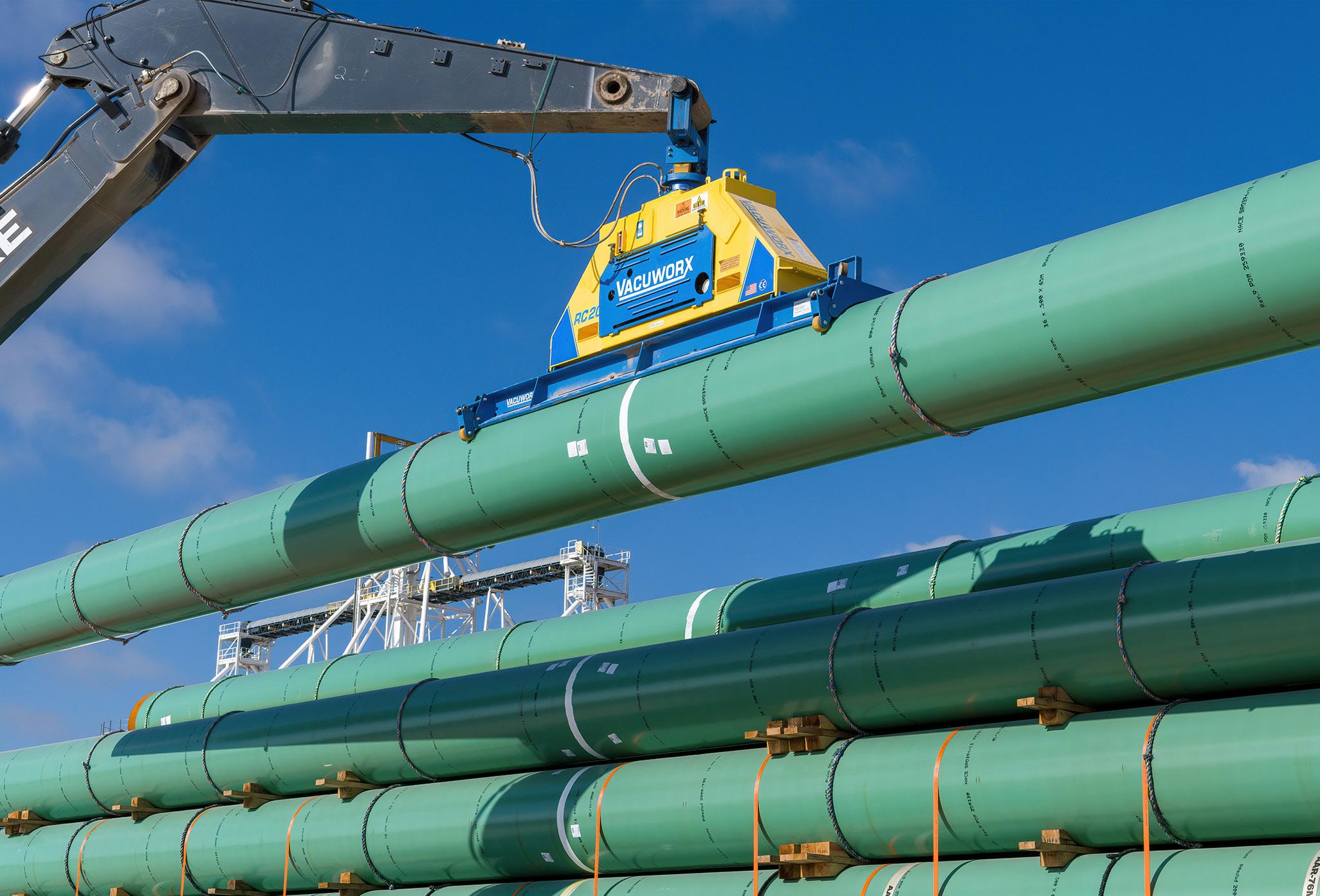
Vacuum lifting allows faster load and unload cycles with less downtime than conventional methods since there are no slings and chains to hook and unhook. There is also no need for costly cribbing or spacers for pipe or plate.
— Justin Hendricks
of sizes of concrete, where a tong, a grab or a vacuum lifter might be designed for one specific diameter.” So, versatility also comes into play.
With the Tea Cup lifter, the Tea Cup sling is typically lowered through a hole in the pipe. The Tea Cup carrier is then aligned and inserted on the sling. “We sell a lot of Tea Cup pipe lifters every year,” Mongan states. “It’s very versatile. It is inexpensive.”
The pipe material often dictates the attachment required. “Most attachments are specifically designed for the type of material the pipe is made from,” says Mongan. “Is it made for concrete, cast iron, plastic or PVC?” Product information on company websites and experienced sales professionals can help point you in the right direction. “Even if you do not see a lifter that suits your needs, we can engineer and build a custom solution. Fifty percent of our business is custom engineered lifting equipment.” This includes odd size pipes or capacities larger than those listed in the catalog.
Some attachments allow you to move more than pipe. “The [Kenco] Pipe Hook is a versatile pipe lifting attachment specifically designed for RCP,” says Black. “When equipped with our detachable wings, box culverts can be easily moved, as well. Standard Pipe Hook models will handle 8-ft. joints of pipe (or shorter) and accommodate a larger amount of pipe sizes. For example, the PH9000 is designed to lift 12-in. RCP up to 9,000 lbs. The Pipe Hook is well suited for narrower trench box operations. Stock models range from 3,500 to 30,000 lbs.; however, custom pipe lengths and capacities exceeding 60,000 lbs. are designed.”
Another pipe handling attachment that Kenco offers is the SuperLift. “This lifter is designed to share multiple tine sets to pick different ranges of pipe,” says Black. “Other tine sets are available for logs/ debris, block and barrier wall. This versatility makes it the perfect choice for a lot of contractors. One unique feature of the SuperLift is once the load is placed and the lift plate is reengaged to the actuator, the lifter can be picked up until the tines are in clear space, at which point they will fully open for the next lift cycle.”
Frequency of use also impacts the decision when it comes to attachments. “Frequency and budget go hand in hand,” says Mongan. “For example, you could use a Caldwell CPP Pipe Pick or a Model CPL Leveling Pipe Lifter on concrete pipe. The CPP would be less expensive but it requires a person to install and remove it from the pipe. A CPL is more expensive but can be installed and removed by the excavator operator alone. So, if you are making a lot of lifts, I would recommend the CPL. If lifts are more periodic and budget is a concern, I would recommend the CPP.
“You can make an argument that the simpler a lifter is, the more rugged it is — the less problems you are going to have with it,” he adds. “But you need to look at the entire scope of the application to really decide the best way to go.”
The other thing that comes into play is the weight of the lifter vs. the lifting capability of the carrier. “Our CPL leveling pipe lifter, some of those lifters weigh upwards of 1,000 lbs.,” says Mongan. “When you are talking about excavator capacity, you also have to consider the weight of the lifter.”
VACUUM LIFTING SIMPLIFIES PIPE INSTALLATION
Vacuum lifting allows faster load and unload cycles with less downtime than conventional methods since there are no slings and chains to hook and unhook, plus eliminates the need for costly cribbing or spacers for pipe or plate. In addition, the need for fewer ground personnel reduces the risk of accidents and lowers payroll and insurance costs.
According to Hendricks, vacuum lifting offers significant advantages in safety (keeping workers away from the material being lifted) amd efficiency (faster load cycles, less downtime and easier placement of the materials), and requires less labor overall since tagline operators are not required on the ground. “One of the advantages of vacuum lifting is that you can load/ unload pipe without disturbing adjacent materials, as well as reduce or eliminate the need for costly cribbing or spacers," he points out. "In addition, the powerful positive engagement of the load, wireless remote operations and 360˚ rotation give the operator precise control.”
Some pipes can be damaged if they are not handled correctly. “You want to select a lifting system that will not damage delicate materials or bonded coatings,” says Hendricks. “Vacuworx vacuum pads are designed to prevent damage to delicate materials and bonded coatings. Our state-of-theart Tough Seal protects materials with no metal contact and secures proper vacuum even on dirty and somewhat uneven surfaces.”
Personnel on the ground can be minimized. “Vacuum lifting systems create a power positive engagement of the pipe that is more secure than traditional rigging methods,” says Hendricks. “Vacuum lifting eliminates the need for employees to climb on trailers to attach slings or chains and reduces the need for tagline operators on the ground. Finally, vacuum systems are able to go where people should not be (in trenches, on stacks, etc.)."
Vacuworx lifting systems consist of four principal components: ˜ a vacuum pump that is driven by a self-contained engine or hydraulically powered by the host machine; ˜ a vacuum reservoir and valve, which provide vacuum in the event of a power failure; ˜ vacuum pad(s); ˜ and visible and audible vacuum alerts.
“The diesel engine (or hydraulic system) powers a vacuum pump that evacuates air to create ‘negative pressure’ and maintains a constant vacuum in the pressure reservoir. When activated, the system pulls a vacuum between the pad and the material to be lifted, providing a powerful positive seal,” Hendricks explains. “The vacuum valve opens and closes via a wireless remote controlled by the operator. When the valve is opened, vacuum pressure is released and the ‘negative pressure’ is transferred to the vacuum pads.
“Pad seal is used on the vacuum pad or pads to cover the material to be lifted and create the necessary suction,” he continues. “The vacuum seal holds until the operator activates the release (even in the event of a power failure). If anything happens while the load is engaged — such as running out of fuel, engine failure, vacuum pump failure or even vacuum valve failure — the load will not release. The emergency light will flash and an alarm will sound to alert the operator that there is an unsafe situation and the load needs to be brought down to the ground immediately.”
The overriding goal of all of the dedicated pipe handling attachments is to increase jobsite safety while simultaneously increasing productivity. The best solution really depends on your application and budget. ET
